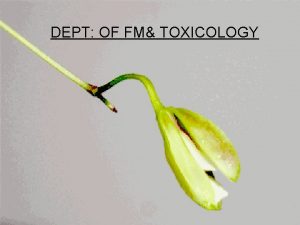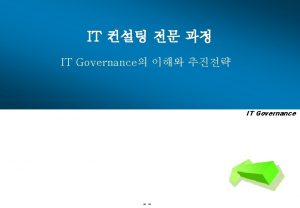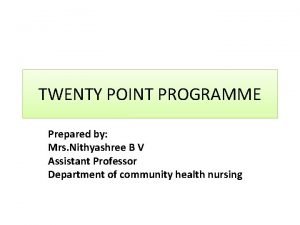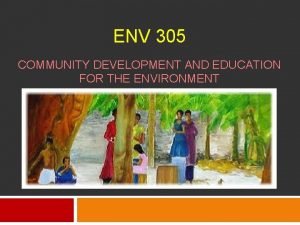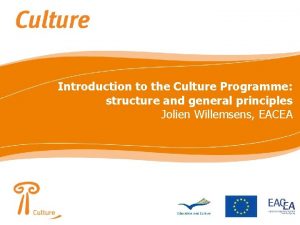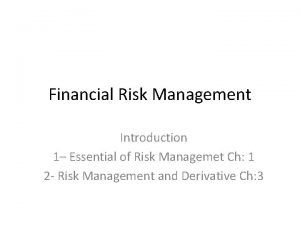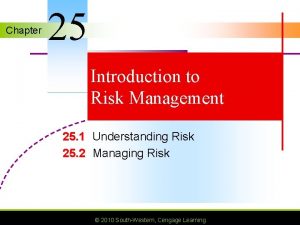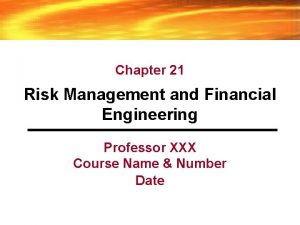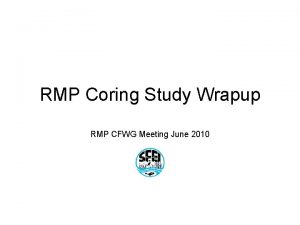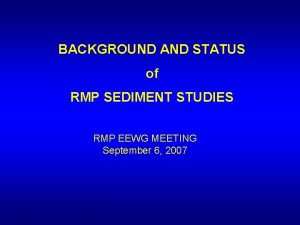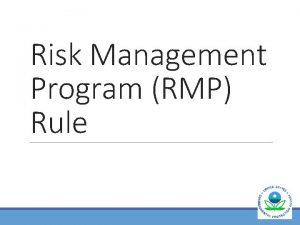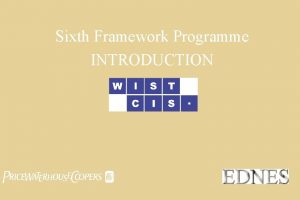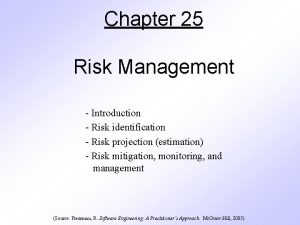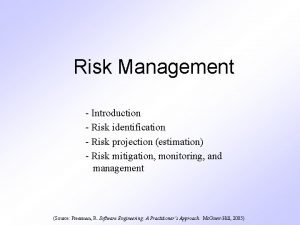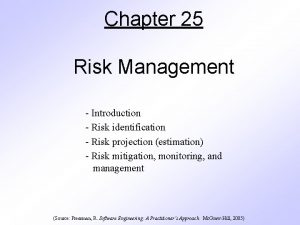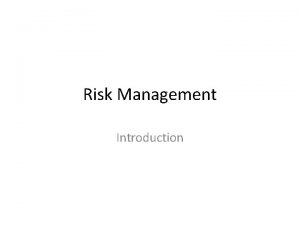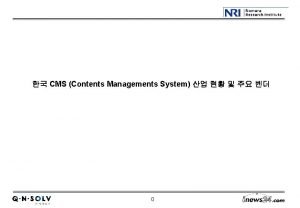Community Risk Programme Introduction Contents History of RMP






























- Slides: 30

Community Risk Programme

Introduction

Contents History of RMP What does IRMP mean? What is the NFCC Community Risk Programme? What does an RMP look like? Research Project Risk, Capabilities & Funding Next Steps

History of risk management plans (RMP) Standards of Fire Cover Centred on Response

History of RMP: Pre-2004 In the Line of Fire Out of the Line of Fire Bain Review

History of RMP: Post-2004 New Fire and Rescue Services Act Regulatory Reform (Fire Safety) Order Introduction of RMP and Devolved Status of Fire

What is an IRMP? ‘Integrated’ ‘Plan’ ‘Risk management’

What is an IRMP? : ‘Integrated’ Deployment of resources Working with partners Working with communities Working with other agencies Across all areas of: - prevention - protection - response In an integrated fashion to reduce risk within the communities in the most efficient and effective way

What is an IRMP? : ‘Risk Management’ Identifying the risks to be managed Assessing the risks Determining the best way to deploy resources to reduce risk “as low as reasonably practicable” (ALARP) Evaluating effectiveness

What is an IRMP? : ‘Plan’ A public-facing plan that is: Developed with engagement Refined through consultation Agreed and implemented by fire authorities across the UK Risk and evidence based Technically rigorous Resilient to legal challenge Should suit circumstances of individual fire authorities

What is the Community Risk Programme? NFCC strategic commitment “NFCC will work with FRSs to ensure that Risk Assessments align to a national definition of risk, supporting the development of risk assessment methodologies which allow a consistent risk-based approach to risk management planning, enables FRSs to focus its resources on activities where they will have the greatest impact on reducing risk and vulnerability within their communities. ” The Challenge There is currently no sector endorsed evidence based toolkit to support UKFRSs in developing their community risk management plans. The absence of a toolkit has resulted in inconsistent approaches being taken with limited good practice recognised nationally.

What is the Community Risk Programme? NFCC Community Risk Programme Vision "To be the evidence based toolkit of choice for assessing Fire & Rescue related risk and vulnerability to contribute towards improving the safety, health and well-being of communities and to be an enabler for economic prosperity across the United Kingdom. "

The Product A sector endorsed toolkit: Underpinned by evidence Flexible in its use Consistent approach to RMP

What are the benefits? Consistent CRM with improved links to inputs, outputs & outcomes Evidence based clarity for the Sector on the role of ‘firefighters’ Supporting prosperity through inclusive risk mitigation Increased confidence & clarity with citizens through a connected approach. Improved connectivity with the wider public service ‘risk’ assessment strategies

The programme will deliver a digital solution that: Generates capacity, data, expertise, understanding and competence at a national level to support this function Creates a national standard supported by tools, that can be used locally to develop an RMP Supports political understanding and local communication, engagement and consultation in the creation of RMPs

Components of RMP Data Identify Hazards Infrastructure • Buildings • Transport • Industry Environmental Geographical Assess Risks Identify controls Deploy controls Evaluate People Prevention FRS physical assets Underlying causes Processes Protection Personnel (Ops and Non. Ops) Value for money Places Response Specialist staff Efficiency Systems Effectiveness Terrorism Hazardous Materials Public engagement / Impact Assessment

Areas the Programme will support implementation Programme Support Engagement Digital application Training Benefits Realisation

Risk, Capabilities & Funding – How does it fit together?

Research Project

Research Context NTU strategic perspective Create an evidence base to support professional, informed judgements about resourcing to address or mitigate the assessed risk

Research Project Aims Review Current FRS Practice Identify Good Practice Identify Gaps in Practice Suggest Areas for Future Direction

Research Project UK FRS Survey: 43 responses UKFRS 30 International responses Six areas: Risk Assessment Response Prevention Protection Working in partnership with NTU Disposition of Resources Evaluation

NTU Research Considerations FRS Use of Data FRS Use of Evidence CRM Methodology Evaluation Other Related Issues

Research Messages Current CRM toolkit (FSEC) deemed unusable and/or irrelevant FRS deemed data poor compared to other emergency services Development required in the ‘what’ & ‘how’ data sources are used to RA Limited use of ‘up-to-date’ guidance or academic/Government research Majority of FRSs do NOT evaluate the Effectiveness of risk mitigation interventions

Research Messages Further development of collaborative arrangements to support data sharing Establish a Sector Intelligence Model (evidence base) for evaluation methodology NFCC to facilitate a national & regional risk assessment Training in statistical analyses, evidence based practice, etc Further Research Required

What Next

What’s next? Continuous engagement with stakeholders We will test and refine to further shape the programme Completion of NTU Research findings (April 2019) Workshops to further explore work of the programme

What next? National Toolkit to support CRM National QA Standardised Database R & D to consider the credibility of data sources Review & maintain relevant up-to-date guidance, good practice repository Refine NFCC Strategy

What next? Commission research to establish economic & social cost of fire Establish a Sector Intelligence Model For evaluation methodologies Develop a competency framework in CRM Collaboration with HO, HMICFRS, other Emergency services Communicate & Consult

Thank you
 Rmp equation
Rmp equation Amway vs rmp
Amway vs rmp Psm vs rmp
Psm vs rmp Duties of rmp
Duties of rmp Smooth muscle rmp
Smooth muscle rmp Market risk credit risk operational risk
Market risk credit risk operational risk Contents introduction
Contents introduction 20 point programme slideshare
20 point programme slideshare Community development meaning
Community development meaning Introduction for cultural programme
Introduction for cultural programme Risk projection
Risk projection Risk avoidance insurance
Risk avoidance insurance Absolute risk vs relative risk
Absolute risk vs relative risk Residual risk and secondary risk pmp
Residual risk and secondary risk pmp Inherent risks examples
Inherent risks examples Absolute risk vs relative risk
Absolute risk vs relative risk Activity sheet 1 conservative moderate or speculative
Activity sheet 1 conservative moderate or speculative Firm risk scorecard examples
Firm risk scorecard examples Risk financing transfer dan risk retention
Risk financing transfer dan risk retention The biggest risk is not taking any risks
The biggest risk is not taking any risks Key risk indicators financial risk management
Key risk indicators financial risk management Business risk audit
Business risk audit Business vs financial risk
Business vs financial risk Relative risk
Relative risk Risk map
Risk map Relative risk and attributable risk
Relative risk and attributable risk Community action cycle
Community action cycle What is the history of community development
What is the history of community development What is financial risk 1
What is financial risk 1 Pure risk examples
Pure risk examples Chapter 21 introduction to risk management
Chapter 21 introduction to risk management



